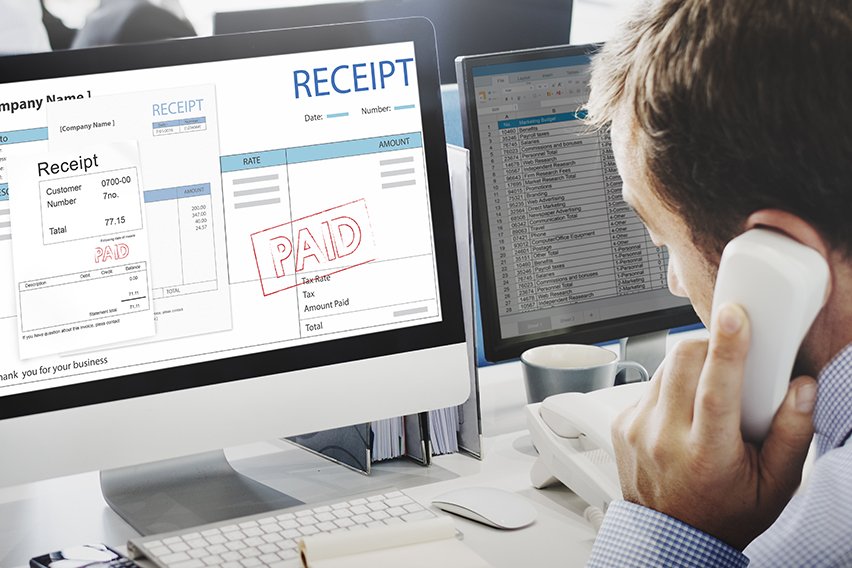Accounts Receivables KPIs: Top 10 Major KPIs To Keep Track

Monitoring accounts receivable key performance indicators allows you to track your team’s performance. Different performance metrics can show what’s working well within your organization. They can also show what areas need improvement to achieve financial health. Here, we’ll discuss 10 key accounts receivable KPIs to keep track of and explain how to calculate them.
Table of Contents
What Are Accounts Receivable KPIs?
Importance of Accounts Receivable KPIs
FAQs on Accounts Receivable KPIs
What Are Accounts Receivable KPIs?
Accounts receivable KPIs are metrics that show how a business manages and collects cash. Different KPIs provide a detailed insight into a company’s cash flow and liquidity. Not every KPI will work for every company. As such, you need to consider your goals and business strategy and focus on a few key metrics.
Days Sales Outstanding (DSO)
Days sales outstanding (DSO) indicates how fast your customers pay their bills based on the invoice date. You can calculate this if you divide your total current accounts receivable balance by the average daily sales revenue. This number will show you how many days it takes for an average customer to pay you. The lower this number, the better. A low number means your customer payments arrive quickly. A high DSO shows that you need to collect payments from your customer faster. Otherwise, you may experience cash flow issues. Keep in mind that a very low KPI is only possible for certain industries like retail.
Your DSO is one of the most significant metrics for determining your company’s health, and every accounts receivable (AR) team tracks it. It provides insight into how quickly your customers pay their bills. The metric also shows how different market forces affect payment times and can help you adapt your current AR strategy.
Average Days Delinquent (ADD)
The average days delinquent (ADD) is another metric related to customer payments. But, in this case, it indicates how many days it takes for a customer to pay for the products or services they ordered after the due date. The average days delinquent is a valuable AR KPI because it can help establish at what point bad debt can become a problem for your company. Moreover, this metric is also an indicator of your AR team’s performance. If your team can’t recover invoices past their due date, you may need to look into their strategies.
You can determine the average days delinquent with a simple equation. Divide the balance of your total past-due accounts by your total accounts receivable balance. If you get a high number, you may be targeting the wrong customers. Or, you may have an understaffed team.
Over time, tracking DSO and ADD can show the state of your business. You’ll see if it’s improving, falling behind, or static. The results allow you to dig deeper into delinquent accounts. They also highlight the necessary steps to lower their number.
Accounts Receivable Turnover Ratio (ART)
The AR turnover ratio (ART) indicates how quickly your AR department collects payments and turns them into cash. You can calculate the AR turnover ratio by dividing your net credit sales by the average accounts receivable. Net credit sales are sales generated through extending credit to customers less all returns and discounts. Simply put, net credit sales are what a company achieves after regular and early payment discounts, allowances, and returns.
Your accounts receivable department is efficient if the receivables turnover ratio is higher. They excel at turning AR into cash. Thus, they improve your company’s liquidity, cash flow, and working capital. If the ratio is lower, you may need to check your AR team’s collection procedures. Collection automation may be an option in these cases.
Collection Effectiveness Index (CEI)
ART indicates how often ARs turn over. The collections effectiveness index (CEI) shows how well your team collects payments. The collections effectiveness index is usually measured over one year. But you can do it more often if you want more precise results. Regular checks of the CEI offer up-to-date insights into gaps in your processes.
Here’s the formula for calculating the collection effectiveness index:
(Beginning AR + Monthly Credit Sales – Ending Total AR) ÷ (All Beginning Receivables + Monthly Credit Sales – Ending Current Receivables) x 100.
The higher the CEI, the more effective your team is at collecting payments. Ideally, the number should be above 80. Of course, you should aim to be as close to 100 as possible. If the number drops, check if you’re targeting the right customers. If targeting isn’t an issue, check for your team’s effectiveness.
Deduction Days Outstanding (DDO)
Customer deductions are amounts the customers owe but don’t pay for several reasons. These could be disputes, incorrect shipping methods, packaging errors, or something else. These deductions represent revenue leakage or hidden profit. As such, it’s important to resolve them as soon as possible.
Deduction days outstanding (DDO) is a performance indicator. It shows how effective your AR team is at resolving deductions. The metric provides insight into the average number of days your AR team will need to resolve an outstanding deduction.
If you want to know your DDO, divide the number of open deductions by their average value within a certain period (usually a year, i.e., 365 days). A high number indicates it takes a long time for you to get paid. This can affect your company’s profitability and cash flow.
Deduction Effectiveness Index (DEI)
Deduction management and recovery are a large part of the job for any AR team. Unfortunately, this can be complex because no universal rules apply to every industry and company. But that doesn’t mean there isn’t a way to check your AR team’s effectiveness.
The deduction effectiveness index (DEI) measures the effectiveness of collecting deductions. It also establishes whether your company is leaving profits on the table.
If you want to calculate it, compare your total deductions, deductions found to be incorrect, and collected deductions. Do this for different categories like returns, damage, shortage, discounts, etc.
Number of Invoicing Disputes
The number of invoicing disputes indicates how many invoices need revisions due to different errors. These errors can happen in processing, manual data entry, or billing. Keeping track of this is vital because mistakes can be costly for any company. Identifying issues can help you come up with a strategy to resolve them and improve your effectiveness.
Bad Debts to Sales Ratio
One of the most important accounts receivable metrics is the bad debt-to-sales ratio. This KPI indicates bad debt, i.e., the percentage of credit sales that go uncollected. You can calculate your bad debt-to-sales ratio by dividing your company’s uncollected sales by annual sales. Then you should multiply that number by 100.
Ideally, the bad debt-to-sales percentage should be below 15%. A bad debt-to-sales ratio is anything above 25%. High numbers could indicate numerous issues within your company. These issues can be a lack of communication with your customers or issuing incorrect invoices. Or, increased numbers could show that your company’s growing too fast and your current system can’t support this growth.
Percentage of High-Risk Accounts
Doing business with a high number of high-risk customers can lead to bad debt and other problems. But, this is also a part of a business strategy in certain cases. For example, you can do business with high-risk accounts when you have an excess or depreciating inventory you need to sell. You can also do it when you want to penetrate a new market. Plus, many industries are inherently high-risk, such as cryptocurrency or CBD industries
As a business owner, you need to find a balance between working with many high-risk accounts and having a low tolerance for risk that can hurt your sales. That’s why it’s essential to keep track of the percentage of high-risk accounts. First, you should determine the factors that constitute a high-risk account. Then, you should classify the existing and new accounts according to those factors.
Knowing this percentage can help you establish what’s driving the accounts receivable performance.
Staff Productivity
When it comes to accounts receivable performance metrics, it’s vital not to forget about staff productivity. The more productive your AR team is, the more successful your company will be. Depending on your focus, there are many ways to measure your team’s productivity. For example, you can base your calculations on the average time your employees spend completing a particular task. Or, you can calculate the average number of employees required for a specific project.
When calculating your team’s productivity, remember the general rule: get the most units of output for the invested units of input. Ideally, your AR team should maximize their output, which involves:
- Collecting invoices
- Processing invoices
- Resolving outstanding invoices
Complement this maximization with the lowest inputs for labor, materials, and capital.
At first, calculating staff productivity may seem simple: dividing units of output by units of input. However, the process is much more complicated. Namely, accounts receivable processes involve a lot of manual work. Your employees could work as much as possible, but slow processes impede momentum and affect their productivity. Due to this, it may be better to calculate how much time your team spends on completing tasks manually.
You can calculate this percentage by dividing the time spent manually performing tasks by the number of working hours in a week. Then, multiply this number by 100.
It may also be helpful to determine the percentage of tasks your team performs manually. Do this by dividing the number of tasks performed manually by the total number of tasks. Multiply this number by 100.
The results could be useful for deciding which part of the process you can automate to enhance productivity.
Besides these 10 AR KPIs, you should also consider tracking other metrics. Such metrics include:
- Cash collections
- The number of revised invoices
- Operational cost per collection

Importance of Accounts Receivable KPIs
Keeping track of essential accounts receivable KPIs is vital for numerous reasons. First, tracking these metrics can help you manage your cash flow by reducing the cash tied up in AR. Second, AR KPIs allow you to maintain adequate working capital and avoid bad debt.
Some KPIs, like bad debt-to-sales ratio, let you make wise decisions when it comes to credit terms. This allows you to take advantage of the benefits of your credit periods fully. Thanks to AR KPIs, you can determine the expenses related to collecting payments, collections performance, average payments, and active accounts. The metrics provide a detailed insight into how your company operates and your team’s efficiency.
With accurate data, you can pinpoint problems in the invoicing process. Data also demonstrate payment communications, collections teams, and billing problems. You can also determine whether there’s a problem with your invoicing policies by checking the number of revised invoices.
All these metrics allow you to review your team’s performance and, if necessary, make changes that would enhance it.

Key Takeaways
Tracking AR KPIs provides detailed insight into how your company operates. The key metrics let you identify areas for improvement. They also allow you to make informed, data-driven decisions to improve your accounts receivable process.
Since every company is different, you should figure out which KPIs work for yours. An accounting software like FreshBooks can make tracking KPIs much easier. Thanks to this program, you can automate daily tasks and reduce the risk of error. Revising invoices becomes easier, and you can improve the collections process. Plus, you can lower the operational cost per collection and track your average accounts receivable balance. Simply put, great accounting software can help your business thrive.
FAQs on Accounts Receivable KPIs
How do you set KPI for accounts receivable?
You need to choose the right KPIs to measure if you want the best results. The first action you should take is to establish your company’s goals. Then, consider your company’s current stage of growth and set your targets. It’s best to focus on a few important metrics, especially in the beginning.
How do you measure accounts receivable?
There are several methods of measuring accounts receivable performance. You can measure the accounts receivable turnover ratio, AR to sales ratio, days sales outstanding, and other metrics and KPIs. The method used depends on the information you want to discover.
What is a good percentage of accounts receivable?
Based on industry data, the average AR older than 90 days should be around 15-20%. Keep in mind that the percentage could be much higher or much lower. This depends on your industry and your credit policy, business history, and clients.
What is a healthy accounts receivable?
Generally, it’s best to keep your AR percentage lower than 15%. Of course, this isn’t always possible because a lot depends on your line of work, clients, and policies.
RELATED ARTICLES

 Debit Memo: Definition, Elements & Types
Debit Memo: Definition, Elements & Types What Is a Good Current Ratio?
What Is a Good Current Ratio? How to Calculate Markup & Markup Percentage?
How to Calculate Markup & Markup Percentage? Formula for Margin of Error: How To Calculate in Easy Steps
Formula for Margin of Error: How To Calculate in Easy Steps 6 Best Accounts Receivable Software for 2025
6 Best Accounts Receivable Software for 2025 What Is an Unclassified Balance Sheet?
What Is an Unclassified Balance Sheet?